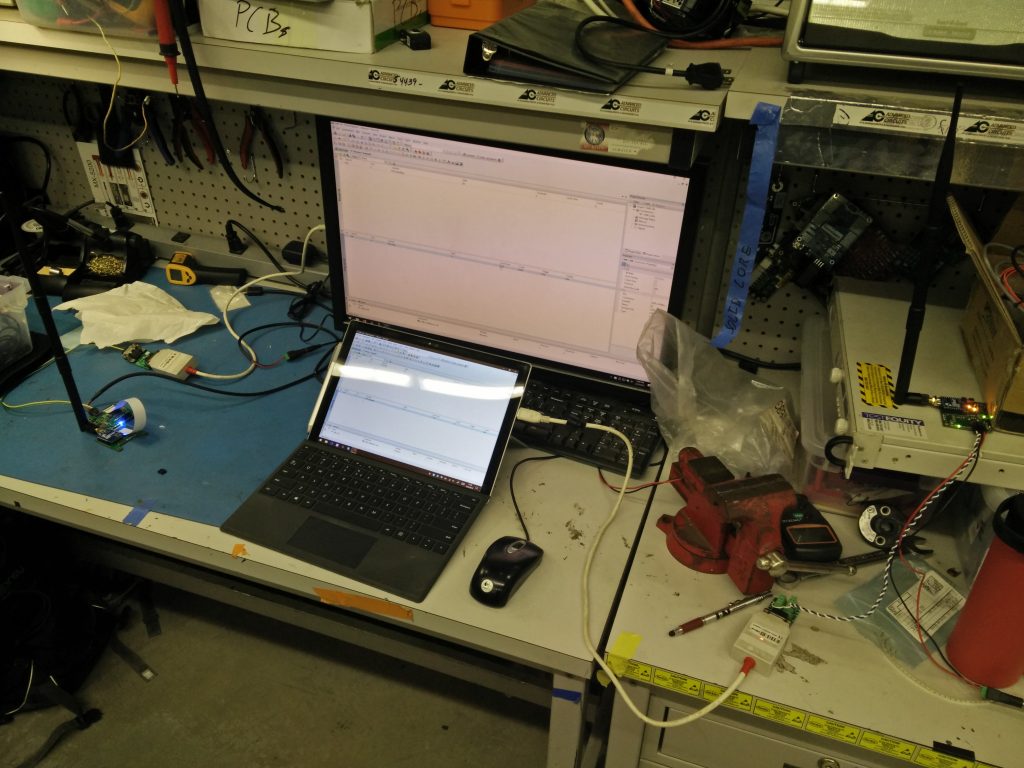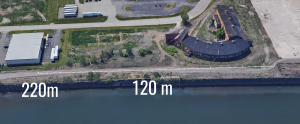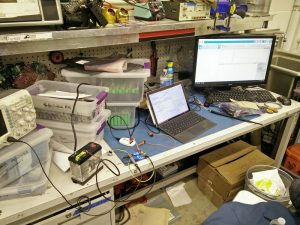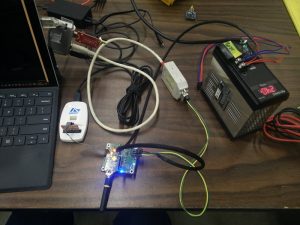Rev. 1 works!
A single Rev. 1 board pair (MCU and transceiver) was assembled and tested; they communicate successfully with Rev. 0. This marks the first time we have successfully bridged two CAN buses!
Pictured above is our test setup. The Rev. 1 pair is on the far left and attached to a PC using a CAN-USB adapter. The Rev. 0 board (far right) is attached to a separate laptop PC using another CAN-USB adapter.
Risks
- The ribbon connectors on the Rev. 1 boards are unfortunately facing the wrong direction. The cable can still be attached, but it must enter the connector from the opposite side, causing interference on the transceiver board.
- Since the cable only interferes with one transceiver “slot,” the other one is temporarily used instead. This is not a significant concern, as we only use one radio at a time anyway.
- A future revision will re-orient the connectors.
- The ribbon connector is intended to be used with the cable’s contacts facing the board (“downwards”), but the pin layout requires the cable’s contacts to face away from the board (“upwards”).
- The connector still appears to work with the contacts facing away from the board; we will continue to use it this way for now in order to proceed with debugging.
- A future revision will either use a reverse-direction ribbon cable, or a “top-facing” connector on one side.
- Timeline is getting somewhat stressed.
- Core features appear to remain on track, but we will continue to monitor our progress in the coming weeks, especially as testing reveals potential flaws.
- Depending on how much slack is remaining, the Ground Control UI’s functionality may ultimately be limited to TOM configuration, as it is the most critical feature.
- “Unknown unknown”: Either the inaction of XB1 attention line or the “full-duplex” operation of our SPI drivers is preventing two-way communication back to Rev. 1.
- Debugging will continue this weekend and into next week.
- Range testing still to be done.
- Testing will occur soon in the FMS breezeway and parking lot.
- Additional testing will likely occur at PittRace; the team plans on heading there for track testing in a few weeks.
Design changes
- No design changes have been made.
Updated schedule
- Rev. 1 confirmed to be functional, so we’re fast tracking the next revision for ordering.
- Other schedule tasks have been adjusted to reflect actual task completion dates; dependencies have been shifted accordingly.






